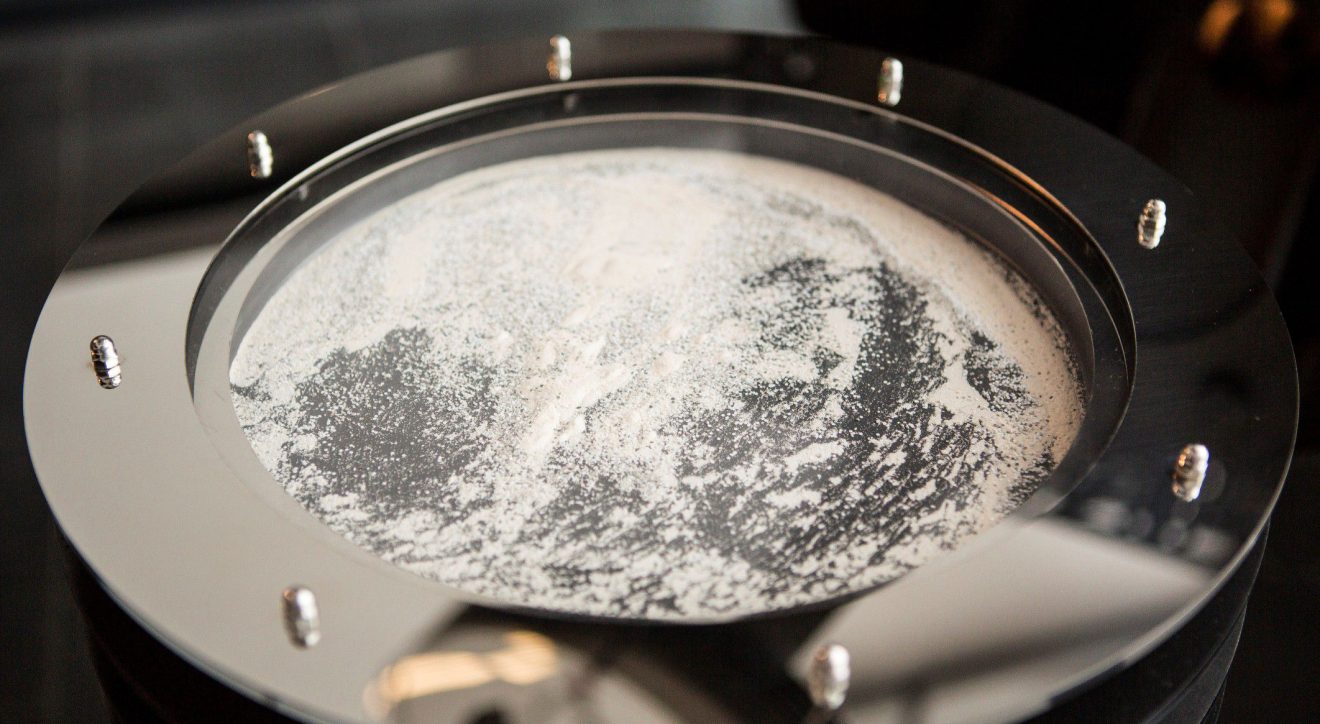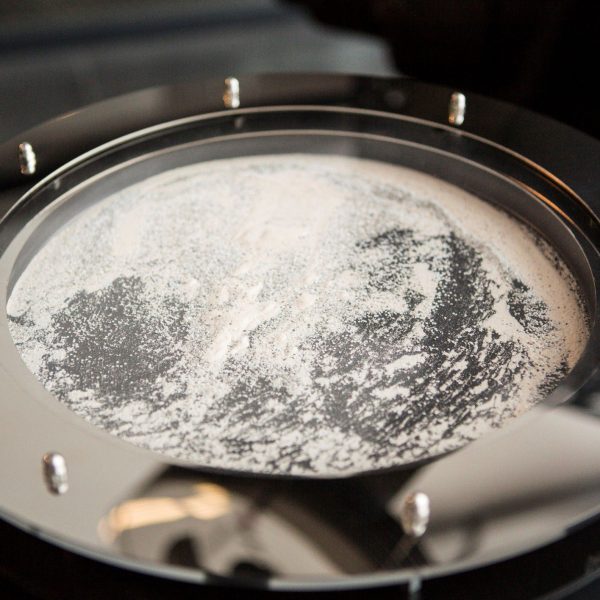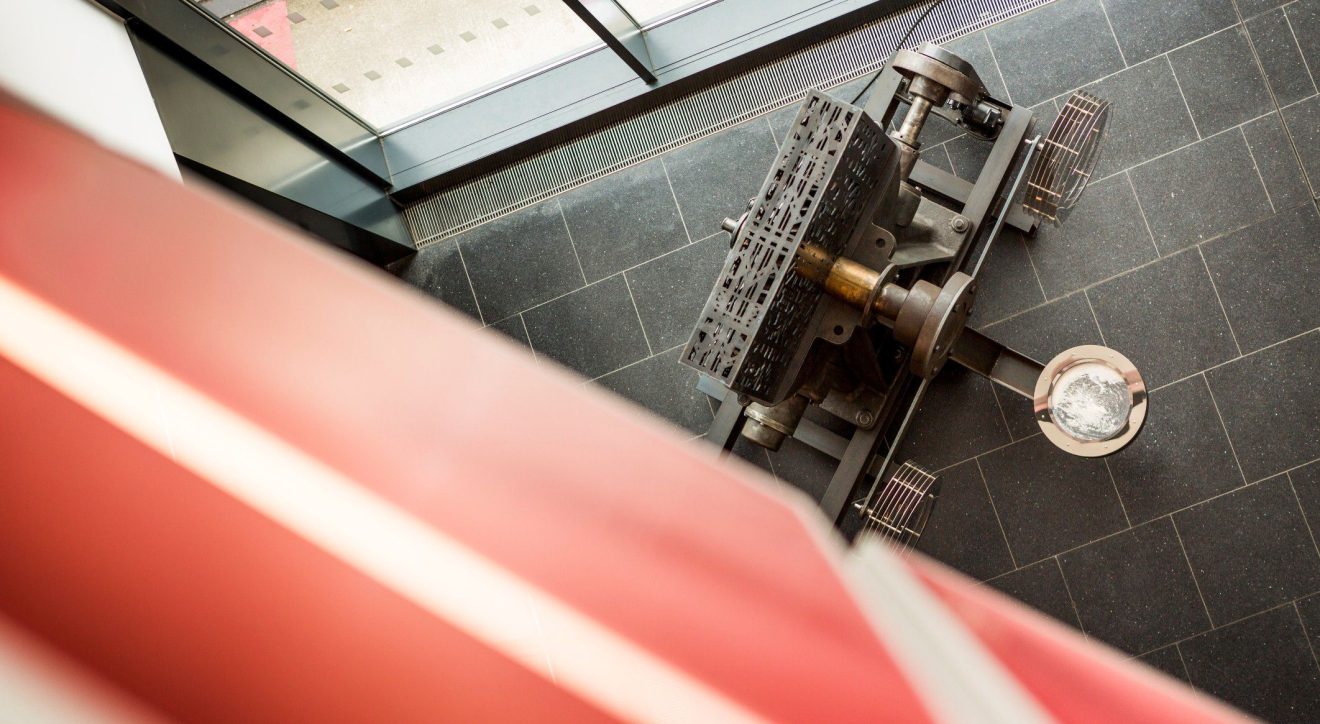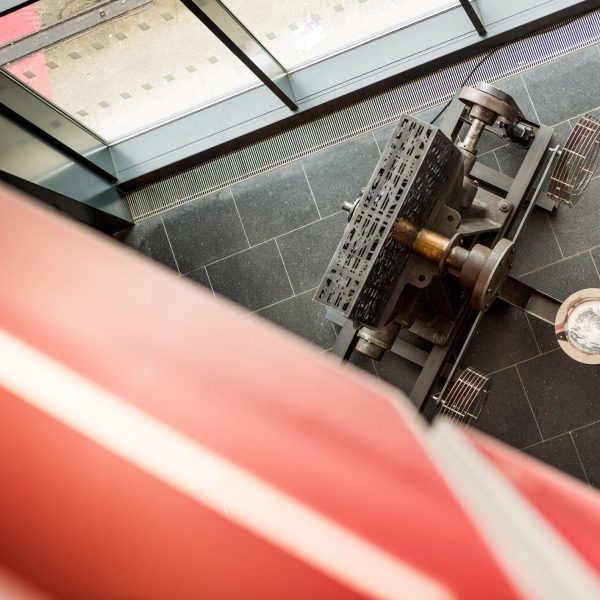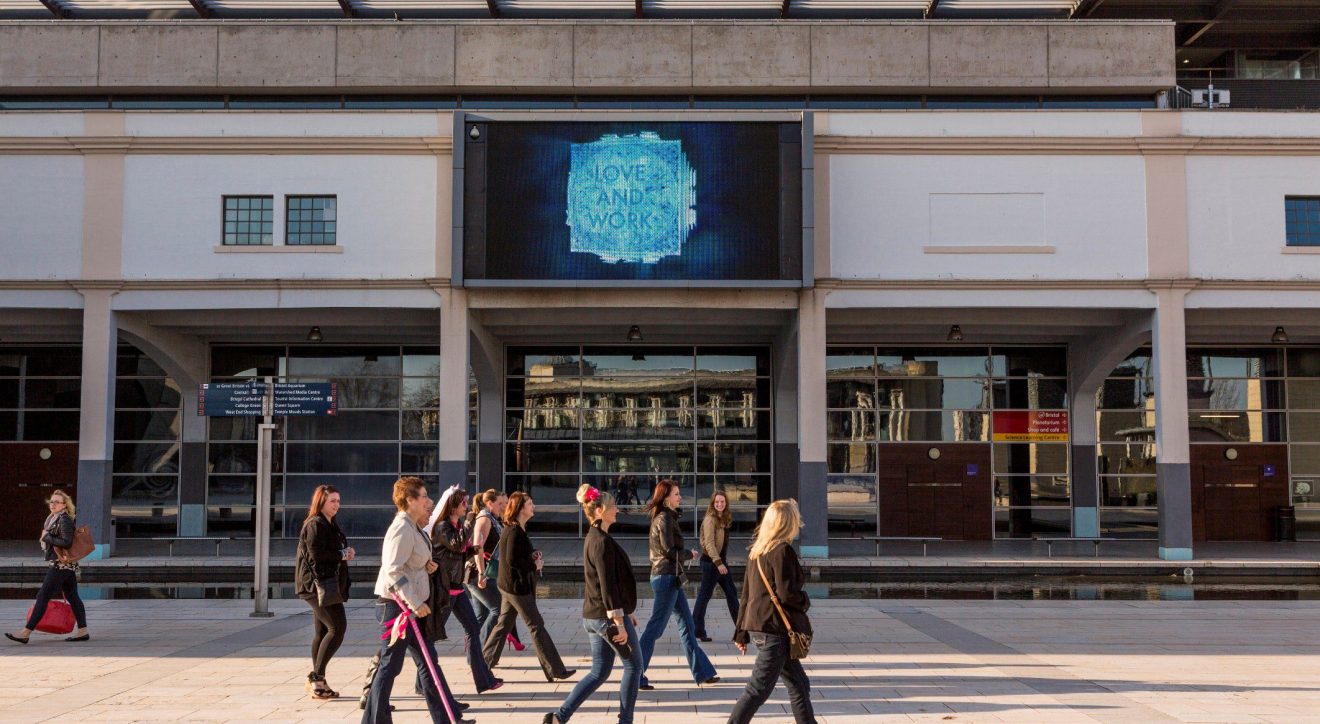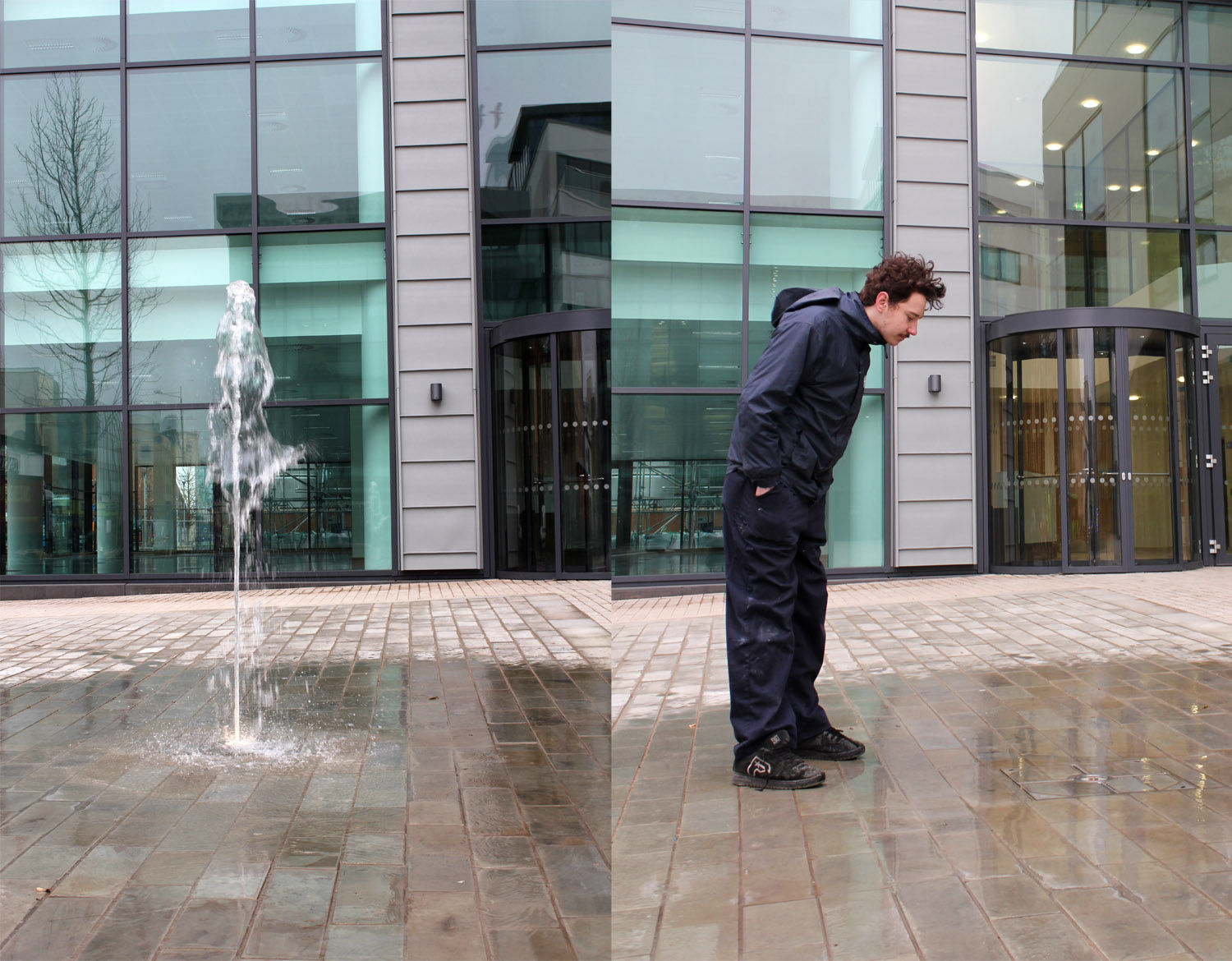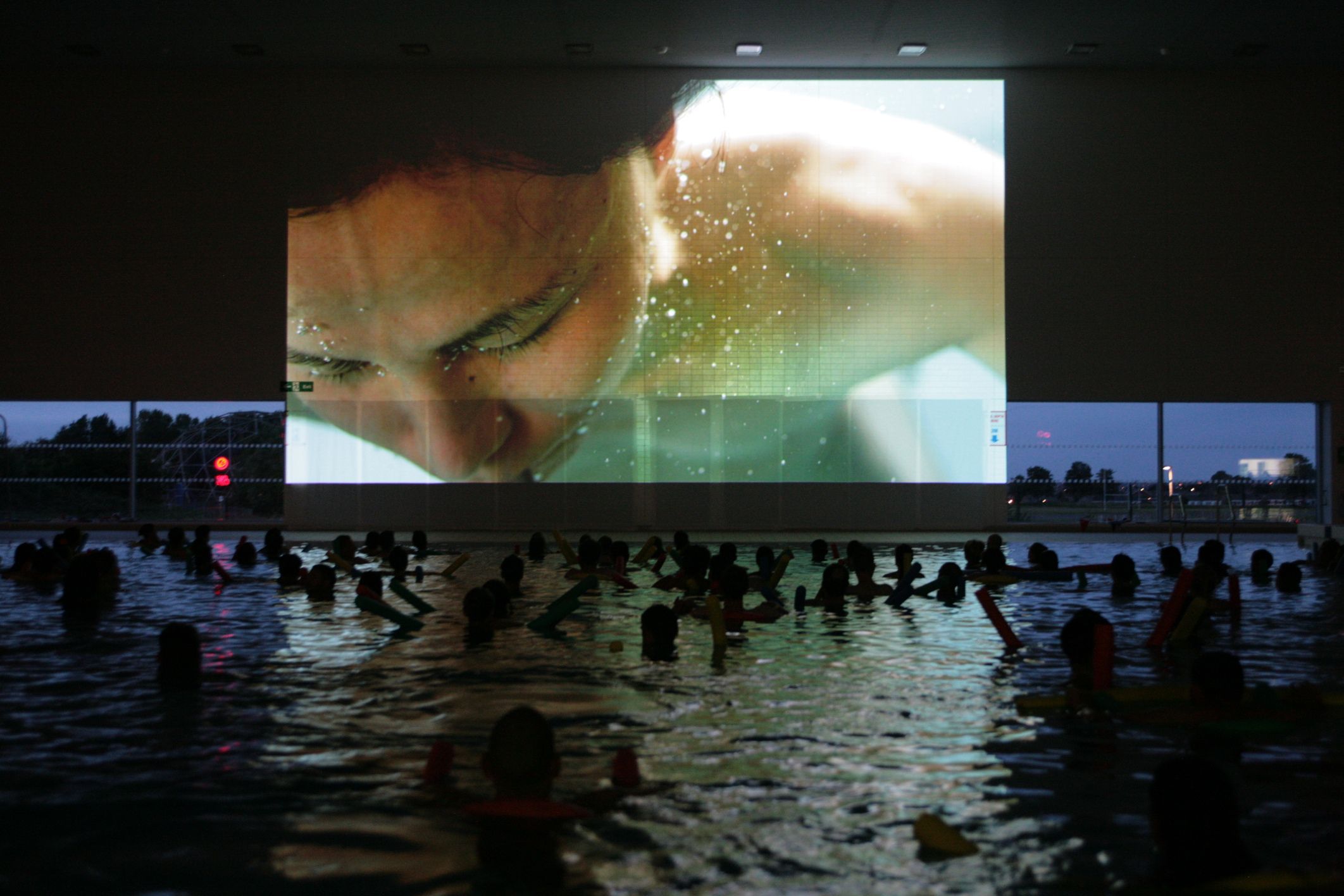
Synopsis
Mark Titchner was commissioned by Bristol City Council in 2009 to develop a new public artwork for Bristol, working closely with the UK animation company Aardman who funded the project as part of the development of their new HQ in Bristol’s Harbourside.
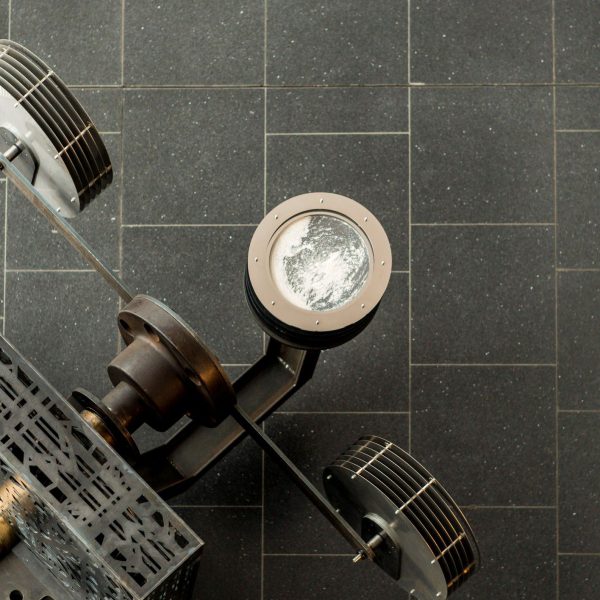

Titchner’s work for Bristol is based upon a redundant reduction gear which has been drawn from the Bristol Museum and Art Gallery collection, and which the artists has used as a basis for a sculptural work that examines the tidal system of Bristol’s floating harbour, and new cut, a tidal body of water and fixed lagoon system.
The gear, which was earmarked for disposal, weighs around 1.5 tonnes and is 2 metres in height. It has been re-engineered to represent Bristol’s dominant feature: water. A set of polished steel discs – referring to the tidal lunar cycle – move through an accelerated sequence symbolising the violent tidal motion of the New Cut. The Floating Harbour’s fixed yet tensioned stasis is depicted in the form of a circular pool which is mechanically vibrated, providing a constantly shifting surface. Together these elements present Bristol’s two key water bodies in their contradictory states in a work that is part tidal clock and part absurdist machinery.
The sculpture is named after the Naiads from Greek Mythology, (from the Ancient Greek word ‘Ναϊάδες’), which were a type of water nymph (female spirit) that presided over fountains, wells, springs, and other bodies of water. The title was chosen by the artist to evoke the works aquatic theme.
The City Council’s Museum Service has supported the work A Naiad by making it part of its permanent collection at M Shed, in a remarkable story of transformation from redundant industrial relic to contemporary art work.

Mark Titchner
Mark Titchner was born in Luton (1973). His work involves an exploration of the tensions between the different belief systems that inform our society, be they religious, scientific or political. He works across a number of media including digital print, wall drawing, video, sculpture and in his installations he often employs motifs taken from advertising, religious iconography, club flyers, trade union banners, prog rock and political propaganda. The common denominator among this material is a quest for idealism and enlightenment; a desire for some form of transcendence.
His sculptural installations are provocative hybrids that often combine new technologies with old techniques. For instance, How To Change Behaviour (Tiny Masters Of The World Come Out) 2006 uses a computer designed billboard alongside hand-chiselled quasi-magical contraptions. Titchner presents conflicting ideologies and outmoded ideas without mockery or cynicism, allowing the viewer to form their own conclusions. In so doing, his installation questions both our blind faith in science and our obedience to authority.
Recent solo exhibitions include: Please believe these days will pass, Art Gallery of Ontario, Toronto, 2012; Be no Content, Upstream Gallery, Amsterdam, 2012; New Art Gallery, Walsall, 2011; Motto, Art House Foundation, London, 2009; The Age of Happiness, Hellenic American Union, Athens, 2009; Plateau Aurora Borealis, Peres Projects, Berlin, 2008; Run, Black River, Run, BALTIC, Gateshead, 2008; The Eye Don’t See Itself, Vilma Gold, London, 2007; IT IS YOU, Arnolfini, Bristol, 2006. Selected group exhibitions include; Altars of Madness, Casino Luxembourg, 2013; Thresholds, Tate Liverpool, 2012; The Future Demands your Participation, China, Shanghai, Minsheng Art Gallery, 2010; Psychosomatic Acid Test, GSK Contemporary, Royal Academy of Arts, London, 2009; Material Presence, 176, London, 2008; Manifesto Marathon, Serpentine Gallery, London, 2008; A Poem about an Inland Sea, 52nd Venice Biennale, Ukrainian Pavillion, 2007; Turner Prize, Tate Britain, London, 2006 and Between Two Deaths, ZKM, Karlsruhe, Germany, 2006.
As part of the launch of A Naiad, a number of the artist’s films works were shown on the 12th April and during Harbourside Arts Weekend: 3rd – 6th May. The films were shown on the BBC Big Screen at Millennium Square, free of charge and included two multi-dimensional digital works entitled ‘Love and Work’, and ‘UP!’, and ‘Fear of Life’, in which a couple or ‘unit of emotional support’, are silhouetted against a bright sunset of propaganda text.
Aardman Animations is an Academy Award winning British animation studio based in Bristol, United Kingdom. The studio is famous for its clay animation / stop-motion productions, particularly those featuring the plasticine duo Wallace & Gromit. Aardman was founded in 1972 as a low-budget project by Peter Lord and David Sproxton, who wanted to realise their dream of producing an animated motion picture.
